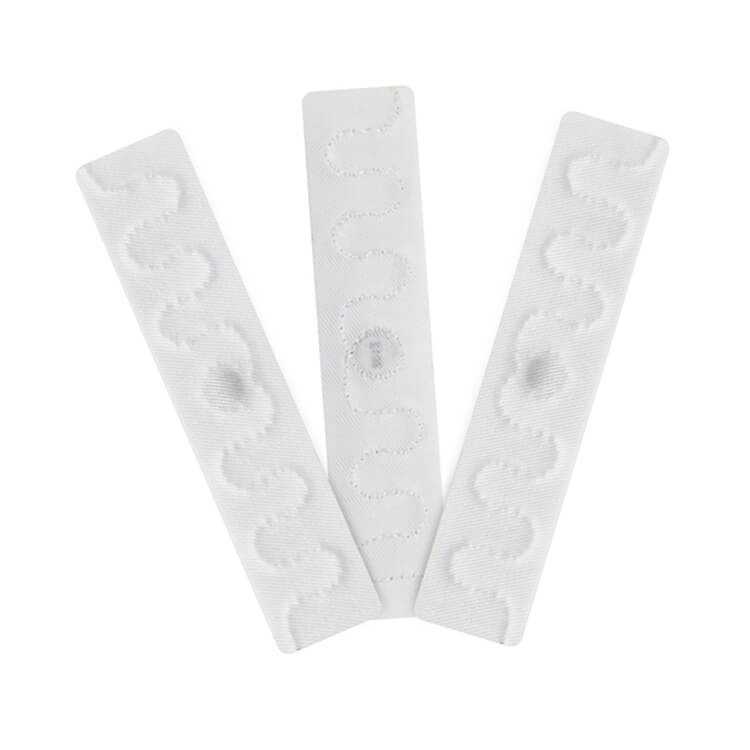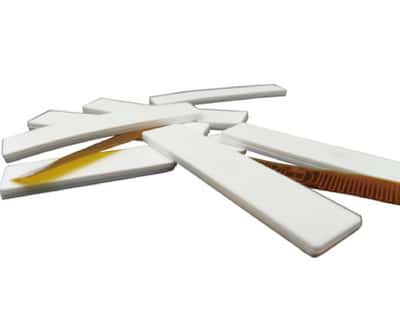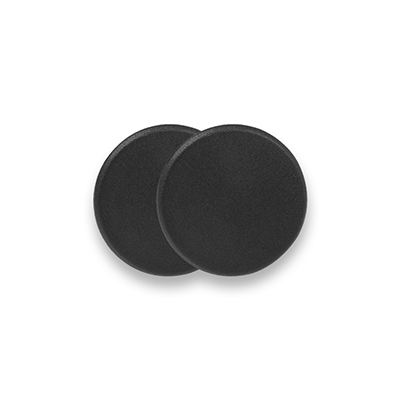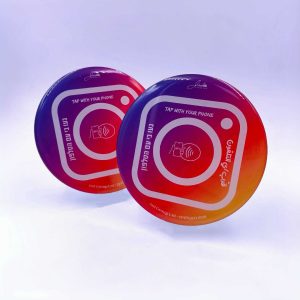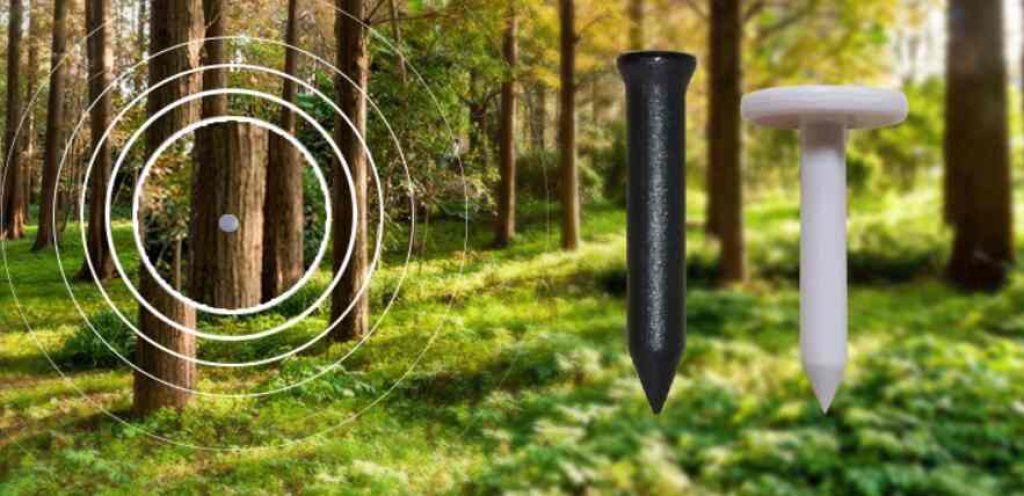
In the fast-paced world of technology, Radio-Frequency Identification (RFID) has emerged as a transformative force, revolutionizing the way we track and manage assets. At the forefront of RFID technology lies a remarkable innovation – RFID Nail Tags. These unassuming devices pack a powerful punch in terms of efficiency, accuracy, and versatility. This comprehensive guide aims to unravel the intricacies of RFID Nail Tags, exploring their applications, benefits, and the diverse landscape of RFID technology.
Various Shapes and Forms of RFID Nail Tags
RFID Nail Tags come in a myriad of shapes and forms, each tailored to specific applications. From traditional rectangular designs to more specialized forms, such as cylindrical or nail-shaped tags, the physical structure plays a crucial role in their functionality. Understanding the variations in shape is key to optimizing their use across different industries.
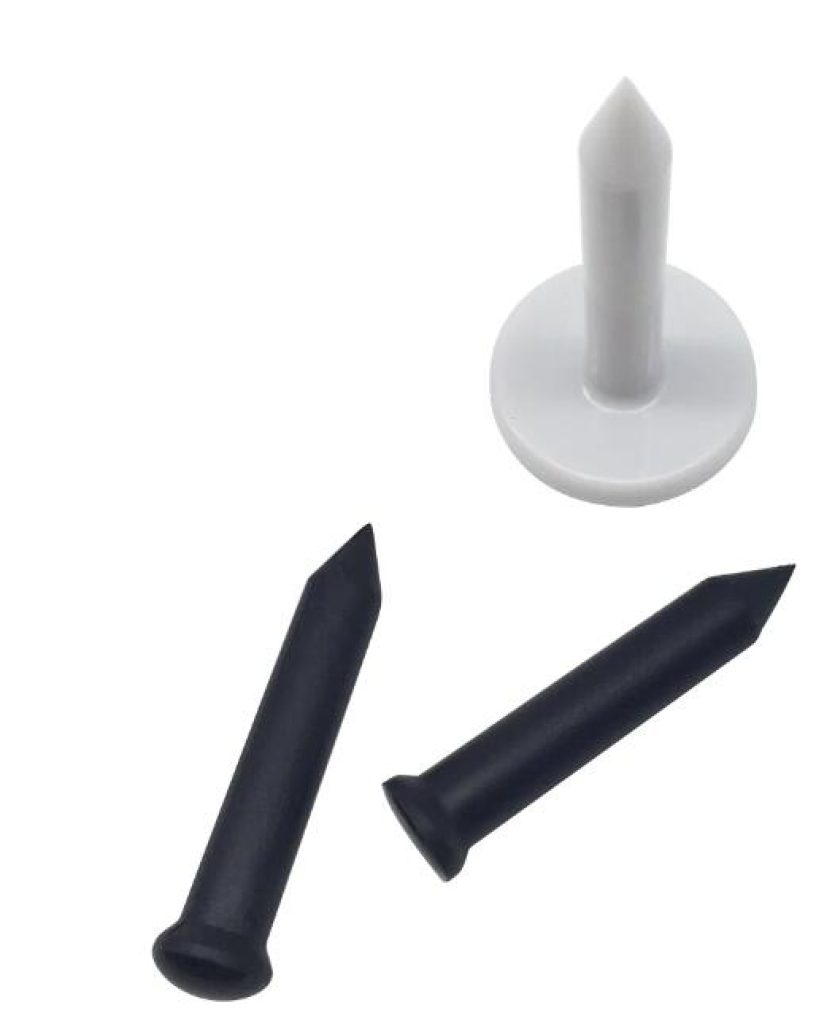
What are RFID Nail Tags?
Before delving into the specifics, let’s establish a foundational understanding of RFID Nail Tags. These devices operate on the principles of RFID technology, consisting of essential components that facilitate seamless communication with RFID systems. From antennas to chips, each element contributes to the overall functionality of these unobtrusive yet powerful tools.
How RFID Nail Tags Work
The magic behind RFID Nail Tags lies in the intricate dance of radio frequencies. This section breaks down the technical aspects, explaining how RFID Nail Tags communicate with RFID systems to relay information in real-time. Gain insights into the underlying technology that propels the efficiency of asset tracking and management.
Applications in Asset Management
One of the primary domains where RFID Nail Tags shine is in asset management. This section explores the numerous ways these tags enhance the efficiency of tracking assets, providing real-time data that empowers organizations to make informed decisions. Examples from various industries showcase the broad spectrum of applications.
Wood Tracking and Forestry Applications
In the timber industry, precision and sustainability are paramount. RFID Nail Tags have found a unique niche in wood tracking and forestry applications, transforming traditional practices. Learn how these tags contribute to sustainable forestry and streamline processes in the lumber and wood production sector.
Advantages of RFID Nail Tags
The advantages of RFID Nail Tags extend beyond mere asset tracking. This section delves into the increased accuracy, real-time monitoring capabilities, and other benefits that make these tags indispensable in today’s dynamic business landscape.
Different Frequencies: 125kHz and Beyond
RFID technology operates on various frequencies, and RFID Nail Tags are no exception. Starting with an overview of the commonly used 125kHz RFID Nail Tags, we’ll then venture into the realm of higher frequencies, exploring options like 13.56MHz, NFC, and UHF. Each frequency range comes with its own set of advantages, making it crucial to choose the right one for specific applications.
Durability Features
In challenging environments, the durability of RFID Nail Tags is a game-changer. This section focuses on the waterproof features that enable these tags to withstand harsh conditions, ensuring reliable tracking even in adverse weather or industrial settings.
Full Spectrum Comparison: 125kHz, 13.56MHz, NFC, and UHF RFID Nail Tags
A comprehensive analysis awaits as we compare RFID Nail Tags across different frequency ranges. From the traditional 125kHz to the high-frequency 13.56MHz, the near-field communication capabilities of NFC, to the extended range of UHF, this section provides a detailed examination of each, helping readers make informed decisions based on their specific requirements.
Full Spectrum Comparison: 125kHz, 13.56MHz, NFC, and UHF RFID Nail Tags (Continued)
Navigating the spectrum of RFID frequencies requires a nuanced understanding of the unique characteristics offered by each range. In this section, we break down the distinctive features and applications of 125kHz, 13.56MHz, NFC, and UHF RFID Nail Tags to empower readers in making well-informed decisions tailored to their specific needs.
125kHz RFID Nail Tags
Applications
125kHz RFID Nail Tags, with their lower frequency range, are well-suited for close-range applications. Commonly employed in access control systems and simple asset tracking scenarios, these tags offer reliability and cost-effectiveness.
Pros
- Cost-effective solution for basic tracking needs.
- Operates effectively in proximity-based systems.
- Consumes less power, leading to prolonged tag life.
Cons
- Limited data transfer speed compared to higher frequencies.
- Prone to interference in dense RFID environments.
13.56MHz RFID Nail Tags
Applications
Stepping into a higher frequency range, 13.56MHz RFID Nail Tags open doors to a broader range of applications. Ideal for access control, library management, and more intricate asset tracking scenarios, these tags strike a balance between proximity and data transfer speed.
Pros
- Improved data transfer speed compared to 125kHz tags.
- Suitable for applications requiring moderate reading distances.
- Wider range of compatible RFID systems and devices.
Cons
- Limited reading distance compared to UHF tags.
- Slightly higher cost than 125kHz tags.
NFC (Near Field Communication) RFID Nail Tags
Applications
NFC RFID Nail Tags represent the epitome of short-range communication. Widely used in contactless payments, mobile device interactions, and localized data transfer, NFC technology brings convenience to the fingertips.
Pros
- Extremely short-range communication, enhancing security.
- Seamlessly integrates with mobile devices and contactless systems.
- Ideal for applications requiring close interaction.
Cons
- Limited reading range (typically a few centimeters).
- Not suitable for applications requiring extended reading distances.
UHF (Ultra-High Frequency) RFID Nail Tags
Applications
UHF RFID Nail Tags redefine the game, offering extended reading distances suitable for large-scale logistics, inventory management, and supply chain optimization. These tags thrive in scenarios demanding rapid data transfer over expansive areas.
Pros
- Exceptional reading distance, often reaching several meters.
- High-speed data transfer, ideal for high-throughput applications.
- Well-suited for large-scale logistics and supply chain management.
Cons
- Higher cost compared to lower-frequency tags.
- Increased susceptibility to interference in certain environments.
Choosing the Right RFID Nail Tag
Armed with insights into the strengths and limitations of each frequency range, readers can now embark on the journey of selecting the RFID Nail Tag that aligns seamlessly with their specific requirements. Whether prioritizing cost-effectiveness, short-range precision, or extended reading distances, the diverse spectrum of RFID frequencies ensures a tailored solution for every application.
In the subsequent sections of this guide, we’ll further explore the durability features, integration possibilities, compliance standards, and real-world applications of RFID Nail Tags, providing a holistic understanding for both newcomers and seasoned professionals in the realm of RFID technology.
RFID Tree Nail Tags in the Wood Industry
The integration of RFID Nail Tags into the wood industry marks a transformative shift in forestry and lumber management practices. In this section, we explore how RFID Tree Nail Tags contribute to sustainable forestry and efficient wood tracking.
Sustainable Resource Management
RFID in Forestry
- RFID Tree Nail Tags enable real-time tracking of trees from planting to harvest.
- Sustainable practices empowered by accurate data on tree growth and health.
Environmental Impact
- Reduced reliance on manual data collection methods lowers the carbon footprint.
- RFID contributes to sustainable and eco-friendly forestry practices.
Applications in Lumber Industry
Mill-to-Market Visibility
- RFID Nail Tags facilitate end-to-end visibility from sawmill to market.
- Efficient inventory management and supply chain optimization.
Quality Control
- RFID enables tracking of wood quality and origin.
- Ensures adherence to industry standards and customer expectations.
Case Studies: Successful Implementations
Real-world success stories highlight the transformative impact of RFID Nail Tags across diverse industries. In this section, we delve into case studies that showcase the tangible benefits experienced by organizations adopting RFID technology.
Retail Inventory Management
Challenge
- Manual inventory counting leading to discrepancies and inefficiencies.
Solution
- Implementation of RFID Nail Tags for automated inventory tracking.
Results
- Drastic reduction in inventory errors.
- Improved efficiency in restocking and order fulfillment.
Healthcare Asset Tracking
Challenge
- Difficulty in locating and managing medical equipment.
Solution
- Deployment of RFID Nail Tags for real-time asset tracking.
Results
- Enhanced visibility into asset location and status.
- Reduction in equipment loss and increased operational efficiency.
Logistics and Supply Chain Optimization
Challenge
- Inefficiencies in tracking and managing inventory in large warehouses.
Solution
- Integration of UHF RFID Nail Tags for extended reading distances.
Results
- Streamlined logistics operations with faster inventory tracking.
- Improved order accuracy and reduced shipment errors.
In the upcoming sections, we’ll explore the integration of NFC technology with RFID Nail Tags, delve into the benefits of UHF RFID Nail Tags for extended range applications, and conclude with a futuristic outlook on the trends and innovations shaping the RFID technology landscape.
NFC Technology Integration
The synergy between Near Field Communication (NFC) technology and RFID Nail Tags opens up new frontiers in seamless and secure data transfer. In this section, we explore how the integration of NFC enhances the capabilities of RFID Nail Tags, offering a user-friendly and contactless experience.
Exploring Near Field Communication
Characteristics of NFC
- Extremely short-range communication (a few centimeters).
- Contactless and secure data transfer between devices.
- Commonly used in mobile payments, access control, and interactive marketing.
Integration with RFID Nail Tags
- Embedding NFC technology into RFID Nail Tags expands their functionality.
- Ideal for applications requiring close interaction and secure data transfer.
Applications and Benefits
Contactless Payment Systems
- RFID Nail Tags with NFC enable secure and convenient contactless payments.
- Integration with mobile devices for a seamless payment experience.
Mobile Device Interactions
- NFC-enhanced RFID Nail Tags facilitate interactions with smartphones and tablets.
- Accessing information, downloading content, or configuring settings.
Secure Data Transfer
- NFC ensures secure data transfer between the tag and a compatible device.
- Ideal for applications where data privacy and security are paramount.
UHF RFID Nail Tags for Extended Range
In scenarios demanding extended reading distances and high-speed data transfer, Ultra-High Frequency (UHF) RFID Nail Tags shine. This section explores the benefits and applications of UHF technology, offering a deeper understanding of its advantages in large-scale asset management.
Understanding UHF RFID Technology
Extended Reading Distances
- UHF RFID Nail Tags offer reading distances ranging from several meters to over 10 meters.
- Ideal for scenarios where proximity-based systems are impractical.
High-Speed Data Transfer
- UHF technology facilitates rapid data transfer, supporting high-throughput applications.
- Suitable for situations requiring quick and efficient inventory management.
Applications in Asset Management
Large Warehouses and Distribution Centers
- UHF RFID Nail Tags streamline inventory management in vast warehouse environments.
- Rapid and accurate scanning of multiple items in real-time.
Supply Chain Optimization
- UHF technology enhances supply chain visibility and traceability.
- Efficient tracking of goods from manufacturing to distribution.
Business Efficiency Solutions
Leveraging RFID Nail Tags for business efficiency extends beyond the technology itself. This section explores strategic approaches, best practices, and tips for organizations looking to maximize the benefits of RFID technology in their operations.
RFID Efficiency Solutions
- Implementing RFID Nail Tags strategically for optimized asset tracking.
- Customizing solutions to align with specific business needs.
Boosting Operational Efficiency
- RFID Nail Tags contribute to streamlined operations, reducing manual efforts.
- Automation of repetitive tasks leads to increased overall efficiency.
Cost-Effectiveness and Long-Term Benefits
- Despite initial investment, RFID Nail Tags offer long-term cost savings.
- Reduction in operational costs, inventory errors, and labor expenses.
Best Practices in Implementing RFID Nail Tags
The successful deployment of RFID Nail Tags hinges on thoughtful planning and execution. In this section, we explore best practices and key considerations for organizations embarking on the journey of implementing RFID technology.
Strategic Approaches to Deployment
Needs Assessment
- Conduct a thorough analysis of organizational requirements and challenges.
- Identify specific areas where RFID Nail Tags can deliver maximum value.
Pilot Programs
- Initiate small-scale pilot programs to test the feasibility of RFID technology.
- Gather feedback and make adjustments before full-scale implementation.
Common Challenges and Solutions
Overcoming Resistance
- Address resistance to change through education and transparent communication.
- Highlight the immediate and long-term benefits of RFID Nail Tag implementation.
Integration Challenges
- Work closely with IT teams to ensure seamless integration with existing systems.
- Choose RFID Nail Tags that align with current infrastructure.
Frequently Asked Questions (FAQs) About RFID Nail Tags
What are the benefits of RFID plastic nail tags?
The benefits of RFID plastic nail tags for trees are numerous:
- Fast, Secure, and Durable:
- Tags are reusable, reducing waste and saving costs.
- Waterproof design for reliable outdoor use in harsh weather conditions.
- Easy to Use with NFC Devices:
- Simplifies data transfer and access through NFC devices and mobile phones.
- Recording Capabilities:
- Enables encoding of various information, such as URLs, names, ages, security inspection, packaging logos, and more.
- Tracking Abilities:
- Facilitates monitoring of item sources and optimization of management processes.
- Small Size and Tree-Friendly:
- Difficult to detect due to a small size.
- The nail design ensures no harm to the tree.
- Contactless Usage:
- Reading range of 1-30cm (depending on the chip), promoting efficient data transfer without physical contact.
What is the function of RFID nail tags?
RFID nail tags serve multiple functions, including:
- Logistics and Inventory Tracking:
- Tracking of boxes, cartons, assets, items, and tracking pallets.
- Ideal for door tag tracking, excluding metal.
- Tree Identification and Name Tags:
- Electronic identification of ancient and famous trees.
- Efficient tracking and management of fruit trees and gardens.
- Security:
- Tags can be encrypted for increased security, protecting sensitive information.
How to install RFID nail tree ID tags?
To install RFID nail tree ID tags, follow these steps:
- Drill a Hole:
- Use a drill to make a hole in the desired location for the RFID nail tag.
- Insert the Tag:
- Gently insert the RFID nail tag into the hole by pressing it in manually (avoid using a hammer to prevent chip damage).
- Secure the Tag:
- Ensure the RFID tag is fixed securely and snugly in place.
- Program and Read:
- Program and read the tag as needed using an RFID reader.
It’s crucial to handle RFID nails with care to avoid damaging the chip. Proper installation ensures an effective and secure solution for identifying and tracking trees.
How do people manage wood & trees by RFID nail tag?
RFID nail tags play a significant role in the management of wood and trees:
- Install RFID Nail Tags:
- Install tags into wood or trees by drilling a hole and inserting the tag.
- Record Data:
- Use the unique ID of each RFID tag to record information about the wood or tree, such as name, age, or other relevant details.
- Monitor the Process:
- RFID technologies help monitor and track trees over time.
- RFID readers can check growth conditions and identify potential threats.
- Improve Traceability:
- Enables the wood and timber industry to trace goods back to their source.
- Enhances transparency and reduces fraud, illegal logging, and unsustainable practices.
What is the reading distance of RFID tree tags?
The reading distances for RFID tree tags vary based on the frequency:
- LF (125kHz RFID Nail Tag): 0-1cm
- HF (13.56MHz NFC Nail Tag): 0-3cm
- UHF (860-960MHz UHF RFID Nail Tag): 0-30cm
These reading distances provide flexibility for different applications, allowing for efficient data transfer based on specific requirements.
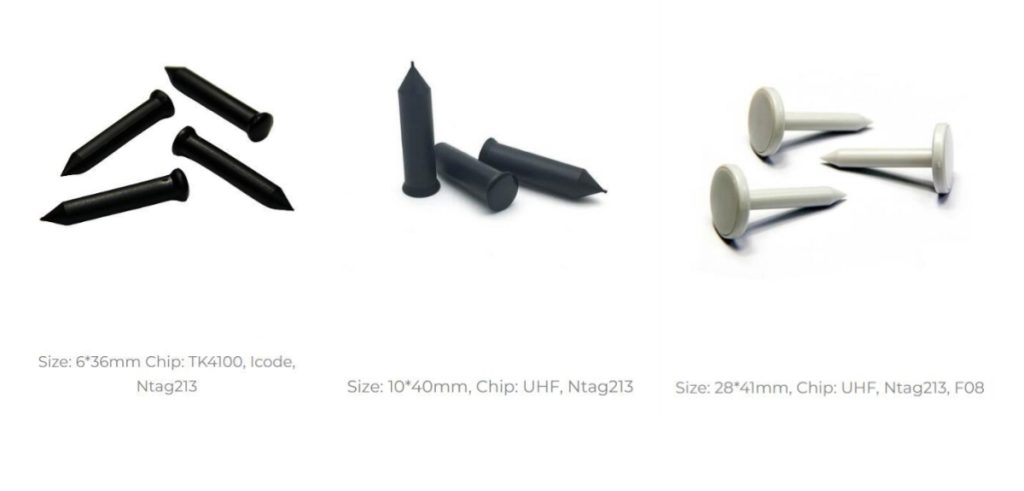
Custom Nail Tags Devices from Manufacturer RFID Tag Maker
RFID Tag maker offers custom-made RFID tree nail tags designed for durability and strength. Key features include:
- Customization:
- Available in LF, HF, UHF, customized as needed, each tag with a unique ID number.
- Material:
- Made from ABS, lightweight (1.25g), suitable for electric drill hole of 6*35mm.
- Working Temperature:
- Operates in temperatures ranging from -20℃ to 85℃.
Why Choose Custom Nail Tree Tags with RFID Chip?
Without RFID Nail Tree Tags:
- Obtaining information about trees is nearly impossible.
- Traditional information cards are easily destroyed or lost, resulting in data loss.
With RFID Nail Tags for Trees:
- Information collection becomes easy, optimizing asset management.
- Asset tracking and process management become more efficient.
- NFC mobile phones allow easy access to tree information for clear identification.






